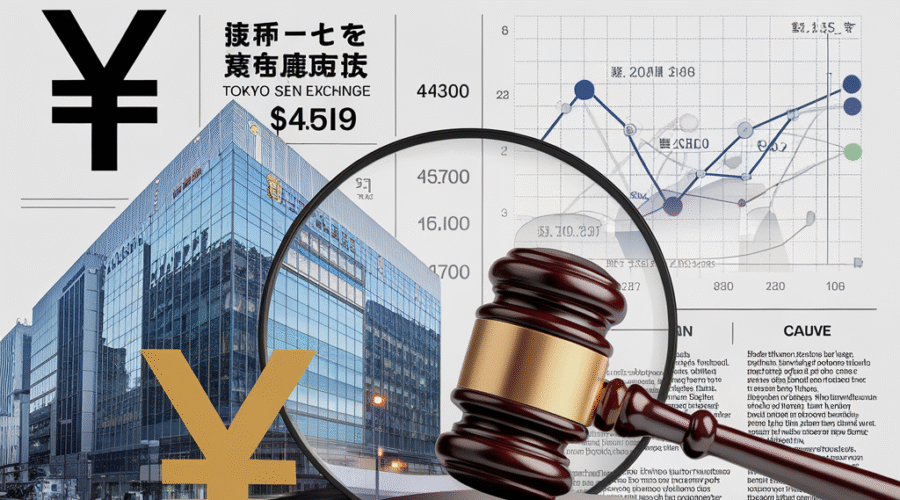Japan’s mergers and acquisitions landscape is undergoing a tectonic shift as revised takeover guidelines and corporate governance reforms reshape deal economics. The Ministry of Economy, Trade and Industry’s (METI) 2023 Takeover Guidelines, combined with the Tokyo Stock Exchange’s (TSE) aggressive push for improved capital efficiency, have created both opportunities and challenges for private equity firms and strategic acquirers. While M&A transaction value surged 8% year-over-year to ¥18.9 trillion ($123 billion) in 2024, the cost premium for take-private deals has increased by an estimated 15-20% compared to pre-reform levels, according to investment banking analysts[2][4][16].
Regulatory Overhaul Reshapes Deal Architecture
METI’s Fairness Mandate
The 2023 Takeover Guidelines introduced rigorous requirements for special committee oversight and minority shareholder protections, fundamentally altering deal timelines and due diligence processes. Under the new framework, 78% of take-private transactions in 2024 utilized independent fairness opinions compared to 42% in 2022, with deal committees spending 30% more time on valuation analyses[1][7][12]. This regulatory shift follows high-profile deals like Japan Industrial Partners’ $15.2 billion acquisition of Toshiba, where enhanced scrutiny added six months to the transaction timeline[5][16].
Tokyo Stock Exchange’s Capital Efficiency Drive
Concurrent with METI’s reforms, the TSE’s mandate for listed companies to maintain price-to-book ratios above 1x has created a pipeline of restructuring opportunities. As of Q1 2025, 37% of TOPIX constituents still trade below this threshold, representing ¥9.3 trillion in potential deal value[4][5][14]. Private equity firms have capitalized on this imbalance, with take-private deals accounting for 61% of all PE-led transactions in 2024 compared to 45% in 2021[5][14].
The Take-Private Surge: Opportunities and Cost Inflation
Deal Premium Dynamics
Average acquisition premiums in Japanese take-privates reached 42% in 2024, up from 34% in 2022, driven by heightened competition and regulatory requirements for third-party valuations[3][9][16]. The Carlyle Group’s ¥210 billion acquisition of a precision machinery manufacturer in November 2024 exemplified this trend, featuring a 47% premium and six-month negotiation period with a special committee[14].
Financing Complexities
While the Bank of Japan’s maintained -0.1% policy rate through 2024 provided favorable debt financing conditions, new fairness requirements have increased equity component requirements. The average debt-to-equity ratio in take-private deals fell to 5.3x in 2024 from 6.8x in 2021, reflecting both regulatory caution and rising interest rate hedging costs[6][9][15].
Strategic Implications for Corporate Leadership
Balancing Shareholder Pressures
CEOs of Japanese conglomerates now navigate dual pressures from activist investors demanding divestitures and regulators mandating fair process controls. The 2024 battle for Seven & i Holdings saw Canadian suitor Alimentation Couche-Tard ultimately pay a 39% premium after special committee negotiations, adding ¥140 billion to the deal’s final price[3][16].
Operational Restructuring Imperatives
Successful post-acquisition strategies increasingly focus on labor cost optimization, with the JFTC’s 2023 Price Shifting Guidelines adding complexity to workforce restructuring. The ¥320 billion take-private of a major electronics manufacturer in 2024 required 18 months of advance wage negotiations with suppliers to comply with new fairness standards[13][15].
Future Landscape: Innovation Meets Regulation
As Japan’s M&A market matures under the new framework, several trends are emerging:
Stapled Financing Solutions
Investment banks are developing regulatory-compliant financing packages that bundle equity commitments with fairness opinion services, reducing deal timeline friction by an estimated 20%[9][14].
Cross-Border Partnership Models
Foreign acquirers increasingly partner with domestic PE firms to navigate special committee requirements, as seen in Blackstone’s joint bid with Advantage Partners for a ¥180 billion industrial conglomerate[2][14].
AI-Driven Fairness Analytics
Major law firms are deploying machine learning tools to predict special committee responses, with Nomura Research Institute’s DealSimulator platform reducing valuation disagreements by 35% in pilot programs[7][12].
Conclusion: The New Calculus of Japanese M&A
Japan’s regulatory evolution has created a paradox: while improved governance standards have attracted record foreign investment (up 22% YoY in 2024), the associated compliance costs have fundamentally altered deal economics[2][4][6]. For corporate leaders, success in this environment requires mastering three dimensions: 1) Early engagement with independent directors during strategic reviews, 2) Development of proprietary fairness assessment frameworks, and 3) Flexible financing structures that balance regulatory requirements with return thresholds. As the TSE prepares to implement phase two of its corporate governance reforms in 2026, Japan’s M&A market appears poised for both increased transparency and sustained premium inflation in control transactions.
Sources
https://www.iflr.com/article/2eir9t2fg352loek1asjk/sponsored/m-a-guide-2025-japan, https://www.jpmorgan.com/insights/banking/mergers-and-acquisitions/japan-mergers-and-acquisitions-rebound, https://practiceguides.chambers.com/practice-guides/corporate-ma-2025/japan/trends-and-developments, https://www.bain.com/insights/japan-m-and-a-report-2024/, https://www.adamsstreetpartners.com/insights/business-transformation-draws-investors-to-japans-private-equity/, https://www.lincolninternational.com/perspectives/articles/in-japan-ma-set-to-climb-amidst-low-rates-and-regulatory-changes/, https://www.globallegalinsights.com/practice-areas/mergers-and-acquisitions-laws-and-regulations/japan/, https://www.moonfare.com/glossary/take-private, https://www.privateequityinternational.com/japans-latest-ma-proposals-could-inflate-take-private-costs/, https://equalisgroup.org/wp-content/uploads/2025/03/RFP-Region-10-Technology-RFP-Response-Sharp.pdf, https://www.annualreports.com/HostedData/AnnualReportArchive/b/NASDAQ_BZUN_2016.pdf, https://www.omm.com/insights/alerts-publications/going-private-transactions-of-listed-subsidiaries-are-driving-ma-activity-in-japan/, https://www.globalcompliancenews.com/2024/01/04/https-insightplus-bakermckenzie-com-bm-antitrust-competition_1-cabinet-secretariat-and-japan-fair-trade-commission-release-guidelines-concerning-price-negotiation-for-appropriate-shifting-of-labor-c/, https://ionanalytics.com/insights/mergermarket/japan-buyouts-gps-see-corporate-reform-as-definitive-source-of-deal-flow/, https://www.nb.com/en/global/insights/insights-japan-land-of-the-rising-prices, https://xbma.org/japanese-update-japans-largest-ma-transaction-in-2023-the-acquisition-of-toshiba-corporation/, https://www.boj.or.jp/en/mopo/outline/target.htm





